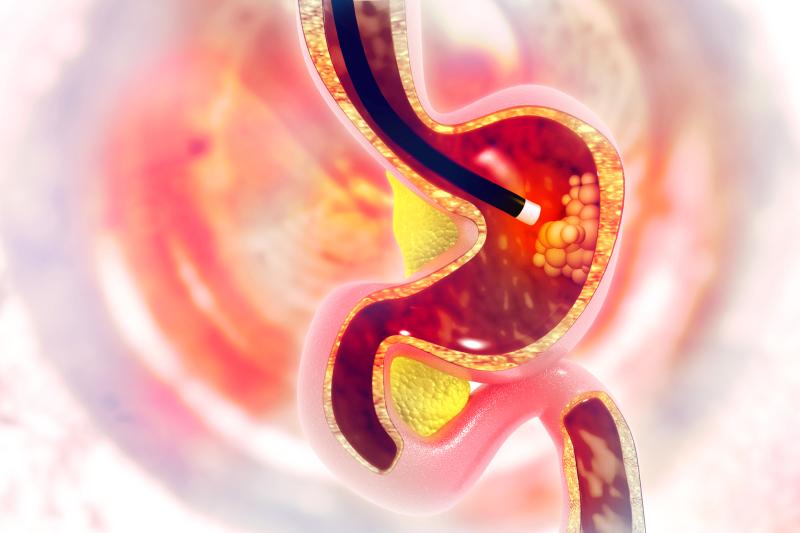
Use of metoclopramide proves inadequate in enhancing endoscopic visualization among patients with overall active upper gastrointestinal bleeding (UGIB), reports a study. However, it does reduce the need for second look esophagogastroduodenoscopy (EGD).
Additionally, metoclopramide succeeds in enhancing gastric visualization in those with UGIB due to gastric lesions, mainly by improving visualization in the fundus.
In this double-blind, double-centre randomized controlled trial, researchers enrolled patients with active UGIB (hematemesis or presence of fresh blood in the nasogastric tube) between 10 April 2021 and 8 October 2022. They randomized participants to receive either metoclopramide or placebo.
Adequate visualization by objective endoscopic visualized gastroduodenal scores (EVS) was the primary outcome. Secondary outcomes were as follows: mean difference in EVS, EGD duration, immediate hemostasis, need for a second look EGD, units of blood transfusion, length of hospital stay, and 30-day rebleeding rate.
Sixty-eight patients met the eligibility criteria, but three in each group were excluded due to protocol violation. Sixty-two patients (31 metoclopramide and 31 placebo) were left in the final analysis.
Numerically more patients in the metoclopramide group than in the placebo group achieved adequate visualization, but this did not reach statistical significance (77.4 percent vs 61.6 percent; odds ratio [OR], 2.16, 95 percent confidence interval [CI], 0.71‒6.58; p=0.16).
On the other hand, the metoclopramide group had a significantly lower need for a second look EGD within 72 hours (3.1 percent vs 22.6 percent; OR, 0.11, 95 percent CI, 0.01‒0.99; p=0.02). No difference was observed in the other secondary outcomes.
In gastric lesions subgroup analysis, however, use of metoclopramide resulted in greater adequate visualization rate (92.9 percent vs 50.0 percent; OR, 13, 95 percent CI, 1.32‒128.10; p=0.03) and mean EVS at fundus (1.79 vs 1.29; p=0.03).
“The 2021 American College of Gastroenterology Guidelines suggested using intravenous erythromycin before endoscopy in patients with UGIB to enhance endoscopic view and reduce the need for repeat endoscopy,” the researchers said.